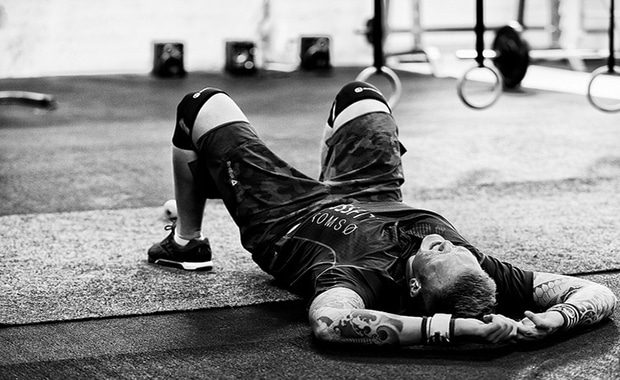When it comes to exercise, you’ve heard that workout recovery matters just as much as training.
CrossFitters are not immune to this, since many CrossFit workout sessions hit the body hard and fast. If you participate in CrossFit, you should know just as much about how to recover from the sport as you do about training.
The goal of this article is to show you just how crucial recovery is- like, make-or-break-your-athletic-potential important.
And then we’ll take a look at the key components of recovery and how to make it a part of your training.
In this guide, you’ll learn why recovery is important, some popular CrossFit recovery tips and tools, and how to create your own recovery routine.
Why Is Recovery Important?
Put as simply as possible, here’s why recovery is important:
For you to get fitter and become a better CrossFit athlete, you must recover from training sessions.
The body doesn’t adapt to the stress of training while you train; it happens in the “off” hours between sessions.
The brain signals to the body during exercise that the stress level is high enough that it must make adjustments so that you’ll be better equipped next time.
Some of those “adjustments” include: a stronger heart, stronger lungs, increased mitochondria in the muscle cells, muscle hypertrophy, improved balance and coordination, and more.
Basically, everything you want to improve on as a CrossFit athlete.
This is why, when it comes to training, more is not always better. At a certain point, more training will become detrimental to your performance.
The window of time between training sessions is when you truly become better at your sport, whether you’re doing CrossFit or something else. Best of all, you don’t need a team of sports doctors and physiotherapists to help you achieve muscle recovery. You can utilize free and low-cost CrossFit recovery tools between sessions, so that you will recover quicker and perform better during training.
Read Also: Hypervolt vs Theragun – Which percussion massage gun is right for you?
Benefits of CrossFit Recovery Methods
For those of you still not sold, here are three tangible benefits of recovery and implementing CrossFit recovery methods:
Increased Mobility
Some of the tools below- foam roller, lacrosse ball, voodoo bands- will take you from tight and sore to loose and ready to train. If you have trouble getting into certain positions, these tools should find their way into your recovery routine.
It’s important to note that the tools aren’t the be-all-end-all of mobility. A foam roller and lacrosse ball are going to help loosen those knots, but they aren’t going to correct underlying mobility issues— only targeted, functional movement mobility exercises can do that.
Decreased Soreness
The no pain, no gain mentality is falling by the wayside. While you should feel somewhat stiff and sore after you workout, you shouldn’t be in pain. Even so, being really sore sucks, especially when you have things to do.
Delayed onset muscle soreness (DOMS) after an intense workout can negatively impact your productivity and comfort. Whether you work a grueling job outside of training or simply do other things besides train for CrossFit, it’s nice to have a body that feels good during your “off” hours.
Become a Better Athlete
There are people that won’t acknowledge this, but becoming a great CrossFit athlete is a long, slow process. The truth is, it takes hundreds of sessions over the course of years to master the fundamental movements. Recovery methods allow you to train harder, for longer, more consistently. Think of them as the 1% advantage you have over others.
The Three Pillars of CrossFit Recovery
The best part about recovering from CrossFit workouts is that the best tools at your disposal don’t have a price tag. While there are obviously socioeconomic factors and varying physical abilities and limitations to consider, the best CrossFit recovery tips, like the best things in life, are free.
For our purposes, these three pillars of CrossFit recovery will contribute to at least 80% of reducing delayed onset muscle soreness, contributing to muscle tissue repair, and generally fueling your post workout recovery.
Pillar Number One: Sleep

It’s free, it’s enjoyable, and honestly, it’s the most important thing in this whole article. You’ve likely heard this before, so beating a dead horse may not be necessary.
Here are some highlights of the benefits of sleep:
- Muscle-building hormones like testosterone and HGH increase during sleep.
- Good sleep helps fight off colds and infections that can keep you out of the gym.
- Good sleep balances your brain chemistry and allows you to “reset” for the next day.
Some research-based keys for CrossFitters to get good sleep:
- Go to sleep and wake up at the same time each day.
- Sleep in a dark, cool room.
- Create a 10-minute before bed routine for your mind to “wind down” before sleep.
- Avoid screen time for an hour before bed.
- Stop hitting snooze. Seriously.
The CrossFit Journal published an article in 2012 about Sleeping for Performance. The key takeaway? No matter how much you use a foam roller, no matter how consistently you train, it all comes down to getting some quality rest.
Pillar Number Two: Nutrition
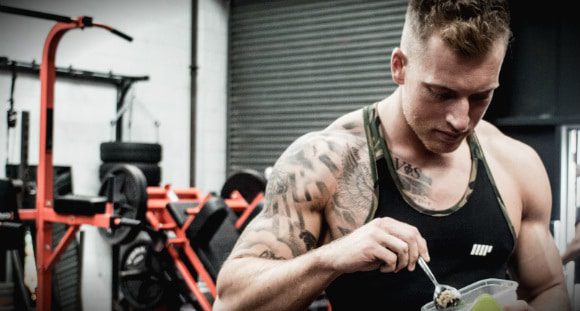
Proper nutrition is essential for promoting muscle recovery after an intense WOD.
You know the deal. Eat lean protein, vegetables, fruits, nuts, and seeds. Don’t let the fad diets turn carbs into a villain; you need an adequate carbohydrate intake to fuel your tough workout while leaving enough in the tank to recover.
Wholesome ingredients give your body the raw materials it needs to repair tissues between training sessions. If you find yourself prone to injury, riddled with fatigue, and unable to give it your all during a workout, focus on getting in the basics of proper nutrition before moving onto supplements.
Pillar Number Three: Water and Hydration

What does a serious athlete gearing up for the CrossFit Open and a casual visitor at their local CrossFit gym have in common? Water.
As the human body is composed primarily of water, you want to stay hydrated at all times. Water creates an internal environment conducive to recovery and repair. If you’re thirsty when you start your WOD, you’re already dehydrated.
Even one hour of CrossFit training can severely dehydrate the body if not balanced out. Most people shoot for 40-70% of their bodyweight in ounces of water per day. If you have a headache or feel dizzy and nauseous after a tough workout, chances are it wasn’t the double unders that did it to you; it was a lack of proper hydration.
The Importance of Proactive Injury Prevention
In addition to implementing the three pillars into your recovery plan, the best thing you can do for your body is to practice proactive injury prevention. This means taking the time to understand the most common CrossFit injuries, and how they occur.
Incorporating an active recovery routine is a small (yet significant) part of overall injury prevention. It’s also important to know your limits, practice good form, and to not lift with your ego. CrossFit is a driven, competitive sport. It’s difficult for many competitors to not treat every day like competition day. There will be times when you push past your limits and put your body at risk, but until you’re in the CrossFit Games, listen to you knees when they’re telling you to take a step back.
It’s also crucial to include a dynamic warm up before every workout. Yeah yeah, you’ve heard it all before, but a 20-minute foam rolling session isn’t a warm up. Sorry not sorry. Practice functional movements to activate your muscles and improve your range of motion before you put weight on the bar.
Other CrossFit Recovery Tools
Here are some inexpensive CrossFit recovery tools you can add to your recovery routine:
Foam Roller
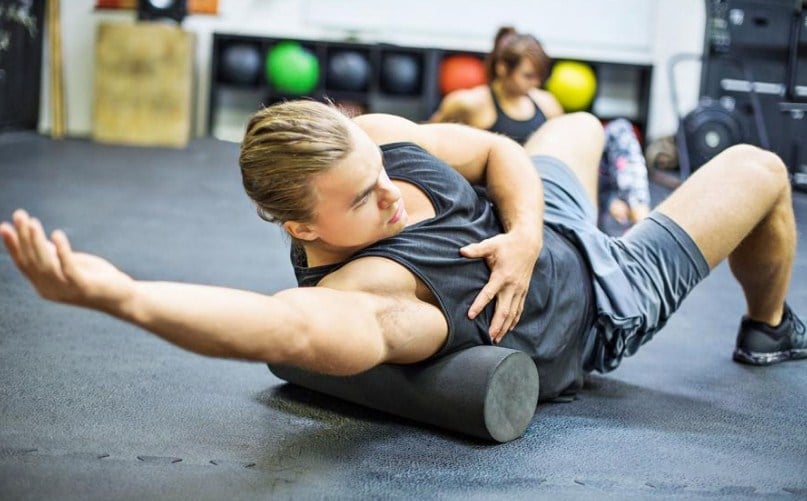
Foam rollers are a form of self myofascial release (SMR), which has many benefits.
Some include decreased muscle tension, increased fresh blood flow to the targeted muscle area, increased flexibility and injury prevention.
CrossFit athletes can either do a daily full body foam roller routine, or use this tool when something (hint: your quads) are excruciatingly sore. This is a fantastic activity to incorporate into a recovery day, especially if you’re missing your pals at the Box.
It won’t feel pleasant at first, but over time, your body will get used to it.
Here is a good starter foam roller routine for CrossFit athletes.
Lacrosse Ball

Tape them together to massage the thoracic spine, or use it on the trouble areas in your achilles or hip. It will hurt during, but you’ll reap similar benefits to the foam roller when done consistently.
The lacrosse ball is another form of SMR that works the “nooks and crannies” of a CrossFit athlete’s body. Use it in the places the foam roller can’t get.
Voodoo Floss Bands
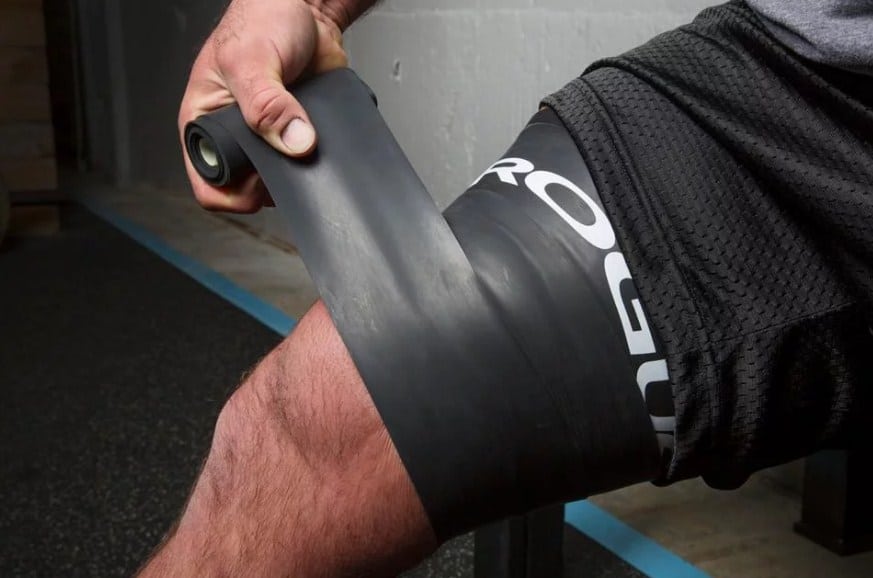
It may sound strange, but voodoo bands squeeze the muscle tight, constricting blood flow and making movement more difficult.
Typically the athlete will run through a “problem” range of motion (such as this voodoo floss ankle method) for 20-30 seconds, then release the band
The release of the bands triggers a rush of fresh, oxygenated blood to the targeted area.
Because you are fighting so hard to work through a range of motion with the band on, the movement might feel much better once it’s removed, too.
Contrast Baths
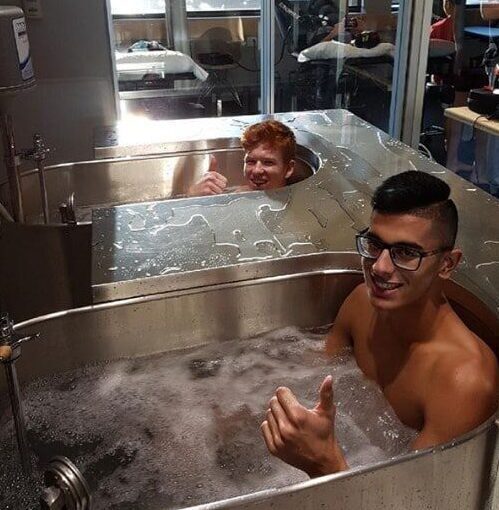
Cold bath, hot shower. Hot bath, cold shower. Either way, the benefits of contrast baths are real.
The hot water will increase blood flow to sore muscles, helping to heal them faster and eliminating muscle fatigue. The cold water reduces inflammation, soreness, and may even increase your energy. This is a great way to restore yourself on the first night of a two-day CrossFit competition.
5 or 10 minutes of each is plenty. For “true” cold water immersion benefits, you may need to grab a 5lb bag of ice from the convenience store- and brace yourself for the first 30 seconds in the tub.
Throw some epsom salt in the bath to supercharge your recovery, too.
Ice Pack Wraps
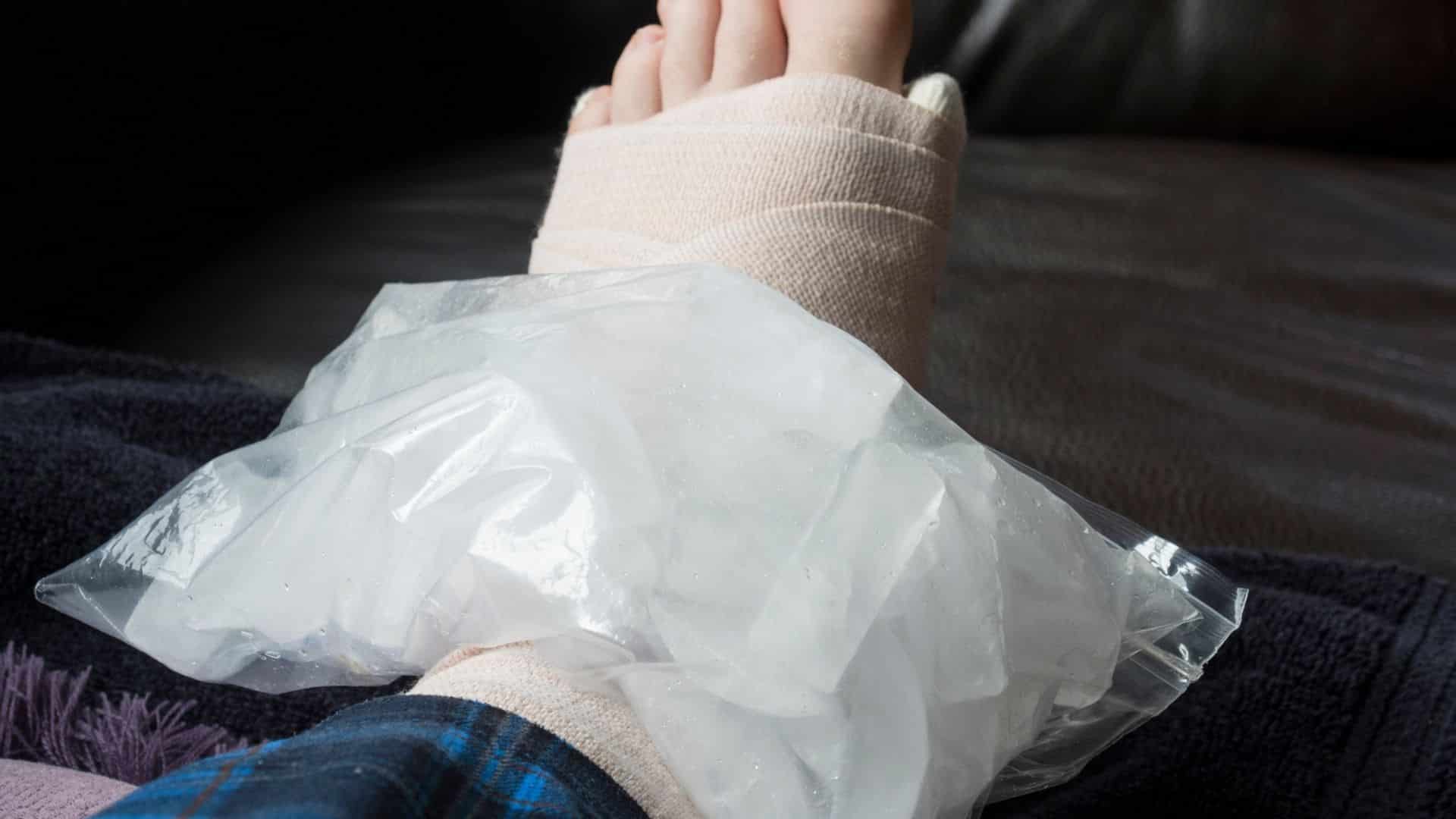
If you’re not quite mentally (or emotionally) ready to hop into a tub of freezing cold water, fear not: you can still get the cooling benefits with an ice pack wrap. These wraps are great for soothing the pain of sore muscles without the mess of bag of ice. The wraps contour to the afflicted area so you can relax and unwind as you heal.
See our full review of ice pack wraps here.
Supplements
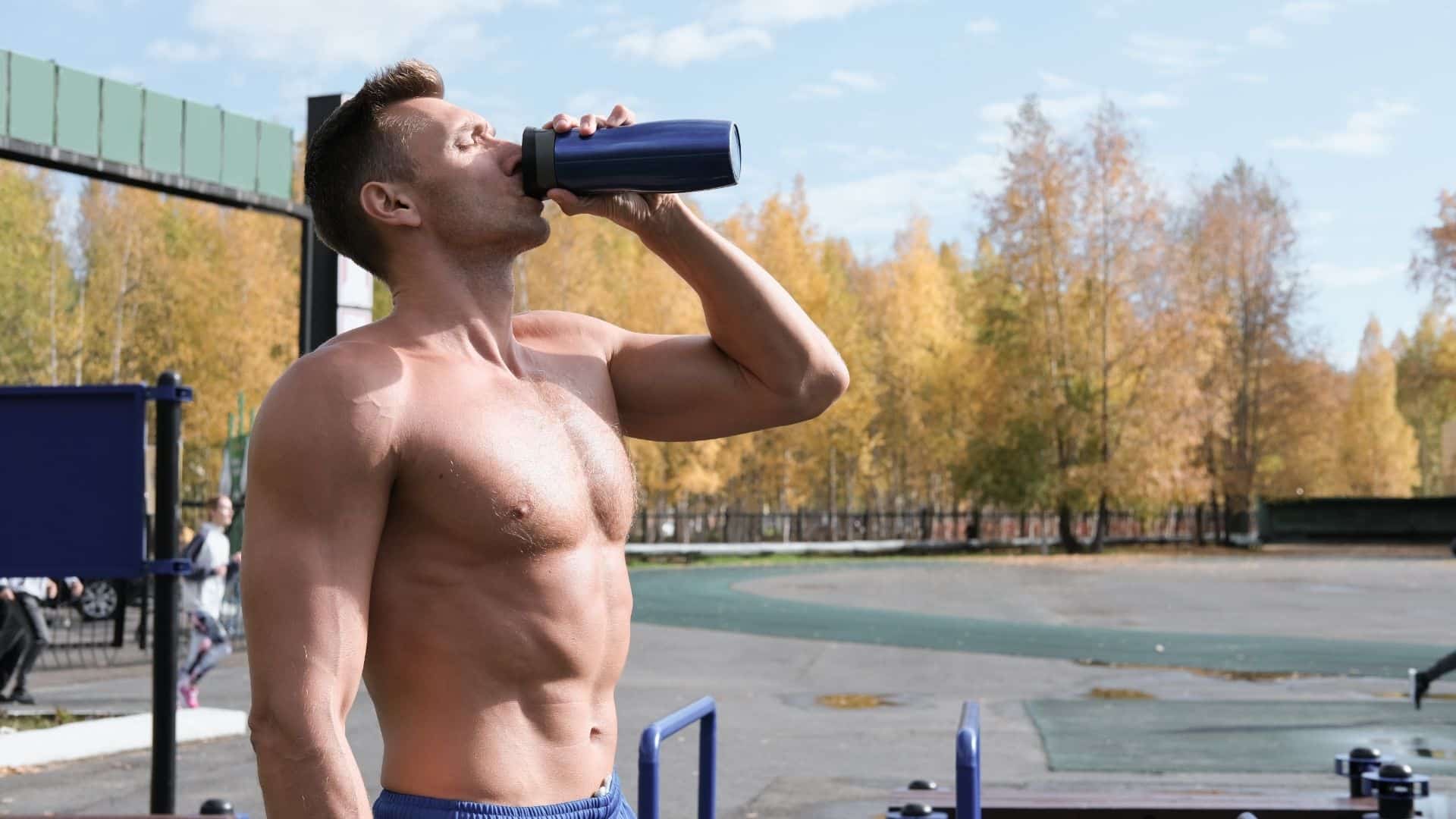
Before you dive too deep into supplement options, revisit those three pillars first. Do what you can there, then use supplements to fill the gaps.
Some of the best supplements to keep in your recovery day toolbox include:
- Protein powder – Whey protein has long been a fan favorite among athletes trying to reach their fitness goals. This supplement can be used to fill gaps when you can’t get enough lean protein in your diet. Protein powder helps with muscle tissue repair, muscle gain, and recovery.
- BCAAs – BCAAs help offset muscle fatigue caused by delayed onset muscle soreness, promote muscle growth, and help older athletes maintain strength. Add these to your diet to help you reach your fitness goals.
- Creatine – Creatine nourishes muscles and helps provide energy to promote tissue repair and growth over time. This is a great option for serious CrossFitters prepping for competition day.
While there are plenty of supplements with numerous benefits, start with these three top contenders to promote better recovery after a tough workout.
How To Make A CrossFit Recovery Routine

The most effective way to create a CrossFit recovery routine that works is to make it a part of your training.
Account for additional recovery methods in your weekly training schedule, even if it means moving around your accessory work.
The best- and free- tools are simply part of what you do already. They’ll need to be accounted for daily. Implement them as part of a weekly checklist like this:
- Sleep 8 hours or more Monday-Friday
- Sleep 7 hours or more Saturday night
- Drink 8 12oz glasses of water on training days
- Drink 6 12oz glasses of water on rest days.
- Meal prep twice a week and always keep wholesome ingredients on hand.
One of the reasons people say fitness is a lifestyle is because it never really stops. Recovery is a large part of that equation, because covering these bases takes a lot of work.
Other than that, add your additional CrossFit recovery techniques like foam rolling or voodoo floss bands at the beginning or end of your training.
Get it done while you’re at the gym so you don’t find an excuse to skip it later.
And if you’re the type to get antsy on rest days, commit to doing twice as much recovery work on days you don’t train.
Sample CrossFIt Recovery Routine
Here’s a sample checklist for a day of training. Make it specific to your situation!
Monday (Training Day 1):
- Sleep 8 hours or more
- 7am: drink 2 12oz glasses of water
- 7am: eat first meal
- 9am: drink 1 12oz glass of water
- 11am: eat second meal
- 11am: drink 1 12oz glass of water
- 12pm: TRAIN
- 1pm (post workout): foam roll and voodoo floss bands for 10 minutes targeting quads and ankles
- 1pm (post workout): drink 1 12oz glass of water
- 1pm: (post workout): protein shake
Read Also: Best Shin Guards for CrossFit and Olympic Lifting
And so on and so forth. You see quickly how many boxes you really have to check when you focus on your training.

Conclusion
Whether you’re a pro CrossFit trainer or a newcomer, active recovery is imperative for anyone that wants to be healthy, more fit, or perform well in the gym.
The good news about CrossFit recovery techniques is that the three pillars of recovery also can be considered some of our basic needs: good sleep, quality food, and lots of water.
If you’re looking to increase mobility, decrease injury, and fix sore muscles, consider using auxiliary recovery methods like contrast baths, voodoo bands, and foam rollers.
Even 10 minutes a day or a few times a week will make a huge difference. Use a daily checklist to hold yourself accountable.
And when you think about how to make recovery a part of your routine, stop. It’s not an add-on to what you’re doing, but a total paradigm shift towards making recovery as natural as training.
Recovery methods are a part of the fitness lifestyle, and no doubt require work. But reaching your goals faster will be worth it.

